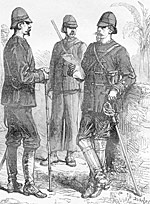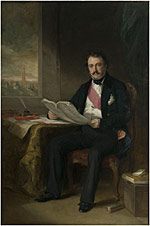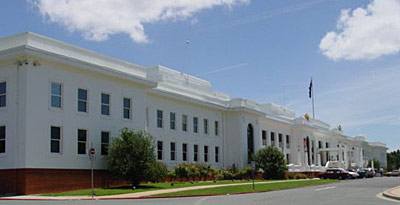
Unit 4: Nationalism, Industrialism, and Imperialism
Lesson A: Birth of the Imperial World
Activity 5: Methods of Controlling Colonies
Western countries found different ways to control the lands under imperial rule. In this activity, you will read about how different methods of control were used around the world. As you read about these methods, answer the following questions in your notebook.
Written Activity - Notebook
In your notebook, respond to the following questions after reading the selection below:
- How are these three systems alike and how are they different?
- What factors that drove imperialism — including industrialization, nationalism, and cultural beliefs — most influenced each of the different forms of colonies? Why do you believe this?
- Why did some imperial powers include local rulers and why did others exclude local rulers?
Direct Rule
Under direct rule, the colony simply became part of the imperial country. The imperial country's government made all the rules for the colony. Since one of the goals for colonization was to assimilate the people in the colonized country, the imperial country did not see any reason to try to negotiate or include natives in the government. Direct rule also required a large military presence to prevent the native people from successfully rebelling. France was the greatest practitioner of direct rule, in particular in Algeria and Tunisia.
Indirect Rule
Under indirect rule, the imperial country normally appointed a governor or other official and then this governor would appoint a local parliament or body to help govern the colony. This parliament or local governing body was not allowed to make any decisions that the mother country disallowed. However, this system did give some sense of local control or input into the governance of the colony. Great Britain primarily practiced this type of rule with its colonies.
Settler Rule
Another form of rule was settler rule. Under this system, settlers from the mother country permanently moved to the colonized land. The settlers then had a form of indirect rule where they had representatives to local governing parliaments or bodies but the native populations did not. These settler colonies had long-term success for the settlers and in almost all instances the native populations were denied basic rights. During the late 20th century, native populations started to receive basic rights. Australia, Canada, and South Africa were examples of settler rule.
![]() Directions: Read each example below and then determine if it is direct rule, indirect rule, or settler rule. Use the buttons provided to check the latest move or, when you are done, check the whole question.
Directions: Read each example below and then determine if it is direct rule, indirect rule, or settler rule. Use the buttons provided to check the latest move or, when you are done, check the whole question.
Page Notes:
[1] Source: This image from http://en.wikipedia.org/wiki/File:Ferdinand_Jamont.jpg is in the public domain because its copyright has expired.
[2] Source: This image from http://en.wikipedia.org/wiki/File:Henry_Pottinger.jpg is in the public domain because its copyright has expired.
[3] Source: This image from http://en.wikinews.org/wiki/File:Old_Parliament_House_cropped.jpg is licensed with Creative Commons Attribution. Attribution: Dysprosia.





